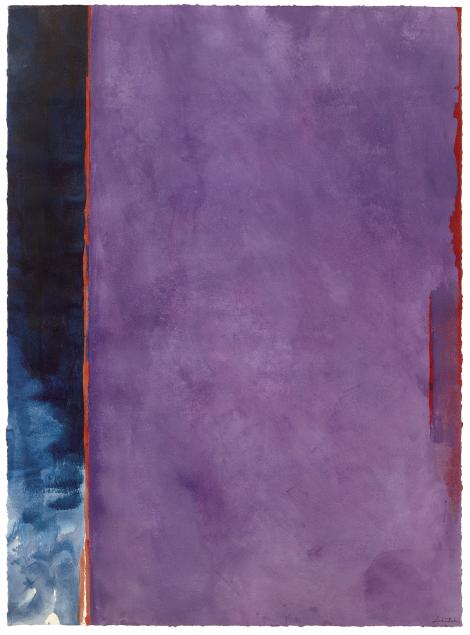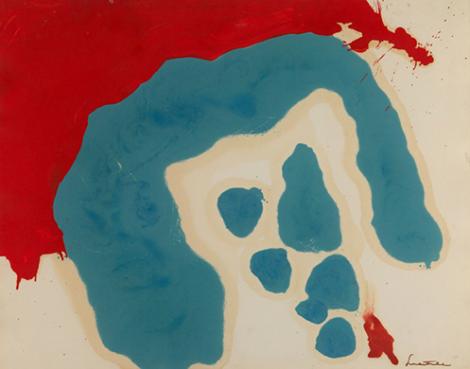A non-representational painting consists of blue, white, and red colors. The blue and white colors remind me of sea ice, while the red, blood stains. This painting combines soft and hard, as well as cold and hot elements. This is Grotto Azura (1963) by Helen Frankenthaler, a post-war American abstract expressionist painter who revolutionized the male-dominated fine arts world in the 1950s.
The painting’s title seems to refer to The Blue Grotto (Italian: Grotta Azzurra) which is a sea cave on the coast of Capri Island, Italy. The sea cave illuminated by the sunlight creates beautiful blue light reflections.
Around 1950/51, Frankenthaler changed her working method and style, from cubist to more liquefied and transparent paintings. This moment led her to innovative technique called soak-stain. This technique uses thinned-down paint to create abstract paintings.
Grotto Azura is one of Frankenthaler’s works on paper. Another work is Santa Fe XIII (1990). It is an abstract painting of colorful stains on the light blue background. This painting seems to depict the natural ambiance of Santa Fe in the 1990s. She created this painting during her residency in New Mexico city.

© Helen Frankenthaler Foundation / VG Bild-Kunst, Bonn 2022. https://www.museum-folkwang.de/en/exhibition/helen-frankenthaler
Frankenthaler was inspired by nature and the landscape around her. She painted them in a more atmospheric than realistic way. The results are stunning abstract paintings that convey multi-perspectives meanings.
In the mid-1960s, Frankenthaler’s painting style tends to be minimalist. She used acrylic paint instead of oil. She created a large zone of bold color, combined with other color zones or simple lines.

Collection Helen Frankenthaler Foundation, New York
© Helen Frankenthaler Foundation / VG Bild-Kunst, Bonn 2022. https://www.museum-folkwang.de/en/exhibition/helen-frankenthaler
Currently, Frankenthaler’s works on paper are exhibited at Museum Folkwang, Germany. The solo exhibition HELEN FRANKENTHALER: Painterly Constellations features 84 works that focus on Frankenthaler’s works on paper.
Paper is an important medium in Frankenthaler’s painting style development because it influenced her decisive move from Abstract Expressionism to Color Field Painting, which she is the prominent figure in the genre. The exhibition displays 75 paintings on paper and 9 paintings on canvas.
Frankenthaler’s works in the Painterly Constellations demonstrate her skillful capacity to use paper as creatively as her works on canvas. Like her canvas, she also painted on a wide size of paper which is “up to 1 × 5 m or 2 × 2 m”.
HELEN FRANKENTHALER: Painterly Constellations are on view from 2 December 2022 – 5 March 2023, at Museum Folkwang, (Museumsplatz 1, 45128), Essen, Germany.

